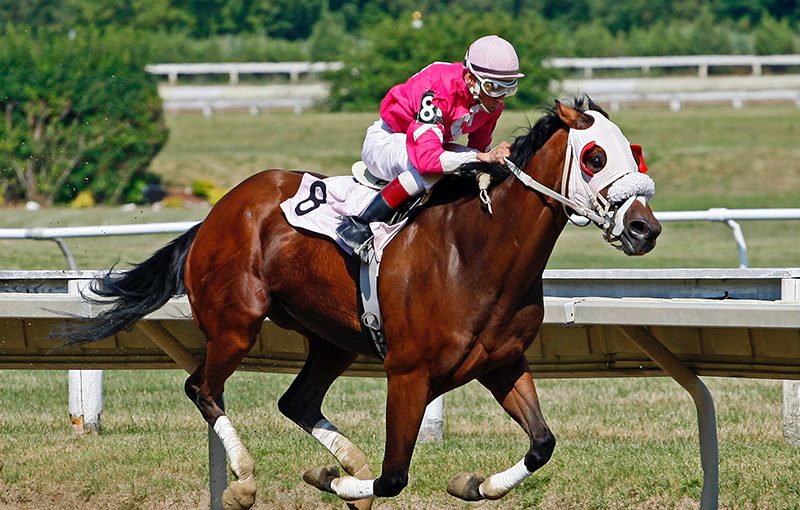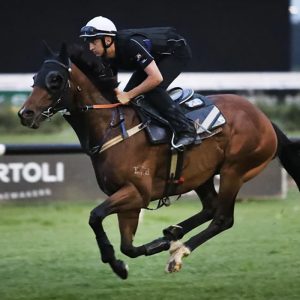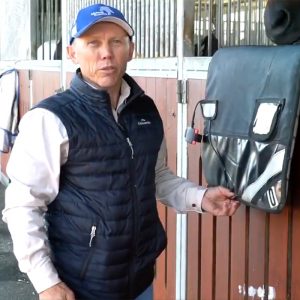By Andrew Stuart, E-Trakka
Racehorse fitness is defined as a positive state of health that contributes to athletic performance. The biological systems involved in racehorse fitness are namely the heart, the respiratory system, and the musculoskeletal system.
When applied to racehorse training, a racehorse’s fitness results from the dynamic interplay of numerous factors – most importantly, a suitably designed training program, and its adaptation to it. Age, genetics, nutrition, and environment also play a role.
With the advent of wearable biometric devices, such as E-Trakka, it’s now possible for racehorse trainers to develop training programs that are highly individualised to a racehorse’s inherent strengths, maximising fitness potential and minimising risk of injury.
At the core of any racehorse training program are four fundamental racehorse fitness metrics, we’ll explore each of these in turn. They are:
- Heart rate
- Stride length
- Speed
- Sectional times
Heart Rate
Heart rate is the number of times the heart beats in a minute. For this reason, it is measured as ‘beats per minute’, or BPM. An electrocardiogram, or ECG, records the electrical signals of the heart. It remains one of the only diagnostic tools available to detect heart abnormalities.
The organ responsible for oxygenating the blood of a racehorse at full speed, it’s easy to see why monitoring the heart, and detecting heart problems early, is not only essential in assessing racehorse fitness, but also for a racehorse’s overall health and wellbeing.
A fit racehorse will show a gradual increase in heart rate as the workload increases and has a comparatively lower heart rate than an unfit racehorse. The speed at which it reaches maximum heart rate is a proven indicator of fitness and readiness for racing.
Additionally, a quick return to resting heart rate after exercise (recovery) is also an excellent indicator of racehorse fitness.
Stride Length
Stride length is the distance covered in one stride. While it is applicable in the walk, trot, and canter, it is at the gallop that stride length, and indeed stride frequency, come into play when assessing a racehorse’s aptitude for various race tactics.
Stride length, the size of the stride, and stride frequency, the number of strides, are remarkably different from a physiological viewpoint due to numerous factors, including breathing rate and energy production – be it aerobic or anaerobic.
Determining the ideal race distance for a racehorse is largely influenced by stride length. A sprinter is characterised by its ability to accelerate quickly by first increasing stride frequency, whereas a stayer requires more distance to achieve the same acceleration.
Speed
Speed is the rate at which a racehorse moves and is measured as a ratio of distance over time. While often considered the metric most associated with winning races, the reality is any competitive edge can only be gained by a delicate balance of all the fitness metrics.
The strength of a racehorse’s cardio-respiratory and musculoskeletal systems is hugely influential in speed. Maintaining a fast pace over long distances relies not only on these systems, but also the delay of lactic acid production, which leads to muscle fatigue.
It is at this intersection when a racehorse has reached its maximum heart rate, and the peak of athletic ability, that it departs from the aerobic zone and enters the anaerobic zone – a topic which will be explored in more detail in a separate article.
Sectional Times
Lastly, sectional times display the racehorse’s speed per furlong (200m), which is an asset during training to ascertain the best race distance and race tactics and can equally be helpful in reflecting on prior race performance in the lead up to the next race day.
Unlocking Racehorse Performance
Through monitoring these key racehorse fitness metrics in real-time and over the course of training, the equine fitness monitoring system, E-Trakka, enables racehorse trainers to measure a racehorse horse’s fitness progression and make more informed decisions.
Disclaimer: This article is not intended as veterinary advice and should not replace veterinary advice. All decisions regarding the health of your horse should be made in consultation with a veterinarian or qualified equine health professional.
About E-Trakka | Trusted by racehorse trainers since 2005, E-Trakka is the pioneering equine fitness monitoring system that tracks heart rate/ECG, stride length, speed, and sectional times to add a competitive edge to your racehorse training.
The most sophisticated equine fitness management tool available worldwide, purpose-built and tested in rigorous training and weather conditions, E-Trakka is also the only solution that offers real-time data streaming, helping you to:
- Identify the horse’s talents
- Assess the horse’s fitness levels
- Determine the most suitable race distance & race tactics
- Tailor suitable individual training programs, resulting in more wins
Order E-Trakka today by calling Andrew Stuart on 0422 868 181 or emailing andrew@etrakka.com.au.





